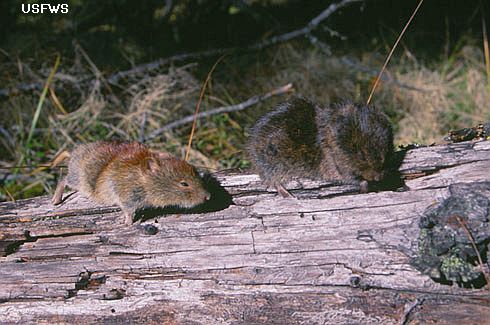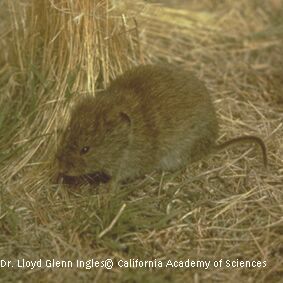THE MEADOW MOUSE
|  |
|---|
|
It is found almost anywhere in Canada - in fields and pastures, around trees and at beaches. Each meadow mouse has its own nest which looks like a ball of grass. It makes the nest in thick grasses or under the ground in tunnels that are just below the surface. The meadow mouse (vole) is small - about 8 to 12 cm. long. It can be gray or brown in color. It can hear very well with its small ears and can see well with its strong eyes. Meadow mice have a good sense of smell. 
Mice make many tiny trails under the tall grass. They may use the same trails over and over. Mice look for seeds, flowers, grass and leaves to eat. Many animals eat the meadow mouse. Badgers, wolves, skunks, weasels, bobcats, minks, snakes, hawks, owls and crows all like meadow mice for their dinner. If a meadow mouse is able to live for a year, it is an old mouse. The female may have fifteen or sixteen litters of babies in a year. A meadow mouse usually has five to nine babies each time. At first the babies are blind, deaf and have no hair. But in less than a day the hair starts to grow. The eyes are open in eight or nine days. After two weeks, the mother stops feeding milk to her babies. They get hungry and start to eat grass seeds. By the time meadow mice are seven weeks old, the females have babies of their own.   more MICE J.Giannetta 1999 updated 2011 Web Pages for Students
Photo-meadow mouse Dr. Lloyd Glenn Ingles © 1999 California Academy of Sciences;
Manzanita Project
|